Port Townsend, WA, 27-APR-2019 – I’m working on a Master’s (Captain’s) license – I think the last time I was on the student side of a classroom was around 1981. I was still working for Digital Equipment and was regularly being sent for training.
I did corporate training for a number of years as an instructor, but I was never on the student side again, until now. It’s reassuring to know how much of the material I already know, but I’ve always been a poor student in that I never cared about grades. I didn’t know it at the time, but I am classic software engineer (or race care driver) in that sense. Artificial and external appraisals don’t matter to me†. It may be why I like single-handing a sailboat so much.
Here, it is different, I must get certain grades in order to get that license.
A number of my classmates plan to use the license professionally, but most seem to be like me: it will help with insurance.
I’m finding that I have two difficulties: fine motor control and the rote memorization of some things. Computer science was always so easy: you could (I could) just figure it out during the test. Most of the navigation problems are like that… almost. The math involved can be quickly deduced, in fact for me, the formulas to memorize get in the way. There is never an explanation about how the formula works, just a sequence of words to help one memorize the formula: TV Makes Dull Children to convert for a True heading to a compass heading, T being for True, and C for Compass. V is for for Variation, M for Magnetic and D for Deviation to finish the sequence.
But, then you can just figure out the formula. This works best for speed and distance formulas. The speed and distance formulas as taught in class, have an unexplained constant of 60 that must be either used as a multiplier or as a divisor: it is for converting in and out of minutes. I find that I have given in during test taking and am using the formulas given in the reference materials.
The tough stuff is rules of the road. You may not refer to reference materials during the test. Here the sayings are very helpful: Only New Reels Catch Fish So Purchase Some Worms… I’m writing these from memory, so the mnemonics are effective. This one lists the precedence of vessels in terms of Give Way and Stand On vessels.
The difficulty comes with the differences between Inland Rules and International Rules. C (catch) is Constrained by draft: there is no such thing in Inland rules, to give an idea of how the differences play out.
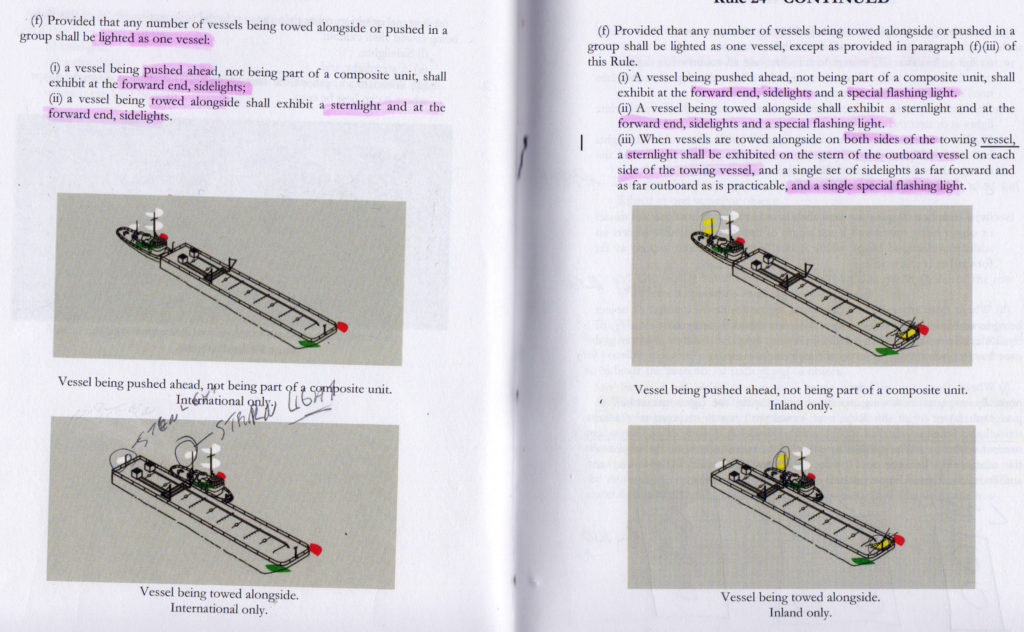
There are difference between vessels on the Mississippi and its tributaries and the waters of the great lakes, and other inland waters. Some rules differ north of the Huey P. Long bridge. Most of us never thought we’d hear about Huey again after high school. He’s worth reading about. Free toll-less bridges were one of his causes so that rural people would be less isolated.
One surprising thing about the tests is the amount of reference material that may be brought into the exams, like this overview of safe water buoys and day marks. A good portion of the prep is memorizing where in the reference materials is the info one will need to answer the questions. But, like any crutch, I find I have a tendency to refer to the reference even when I know the material cold.
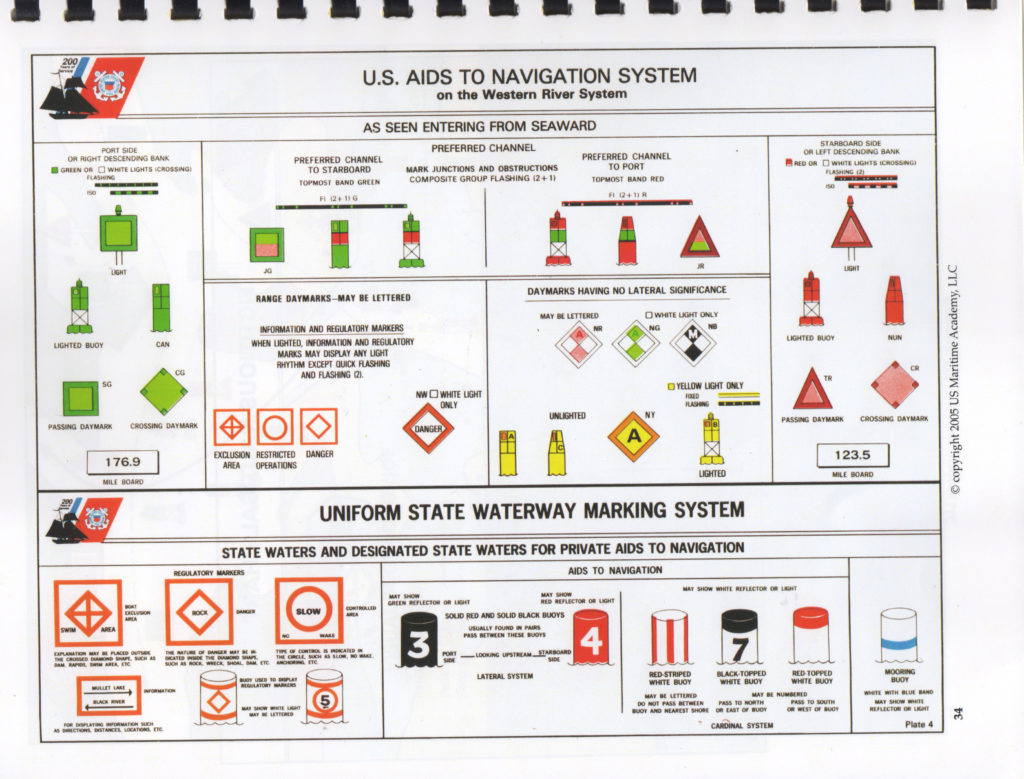
Lights are also a bit difficult, with inland US rules differing from International rules sometimes, but not always. Things do settle into place with time.
The tests do still scare me with no good reason. I was once an amazing test taker, scoring well higher that I should have, but here I find I am going too fast, not reading the questions completely or missing key parts. As I take and retake tests, the skills are returning.
The most difficulty I am having is plotting on a chart. This takes good fine-motor control and I have never had it. Again, like getting to Carnegie Hall, practice, practice, practice and I am getting better.
I have a week from Wednesday before test taking starts: fail a test and I get to take it over again, so there is no reason I shouldn’t get the license.
For those who know about such things, it looks like I should qualify for a near shore license, plus sailing and towing endorsements. It means that I can charge money for towing, and can skipper vessels of 25 tons or less and sailing vessels for money and take passengers. I have no intention of doing any of these things.
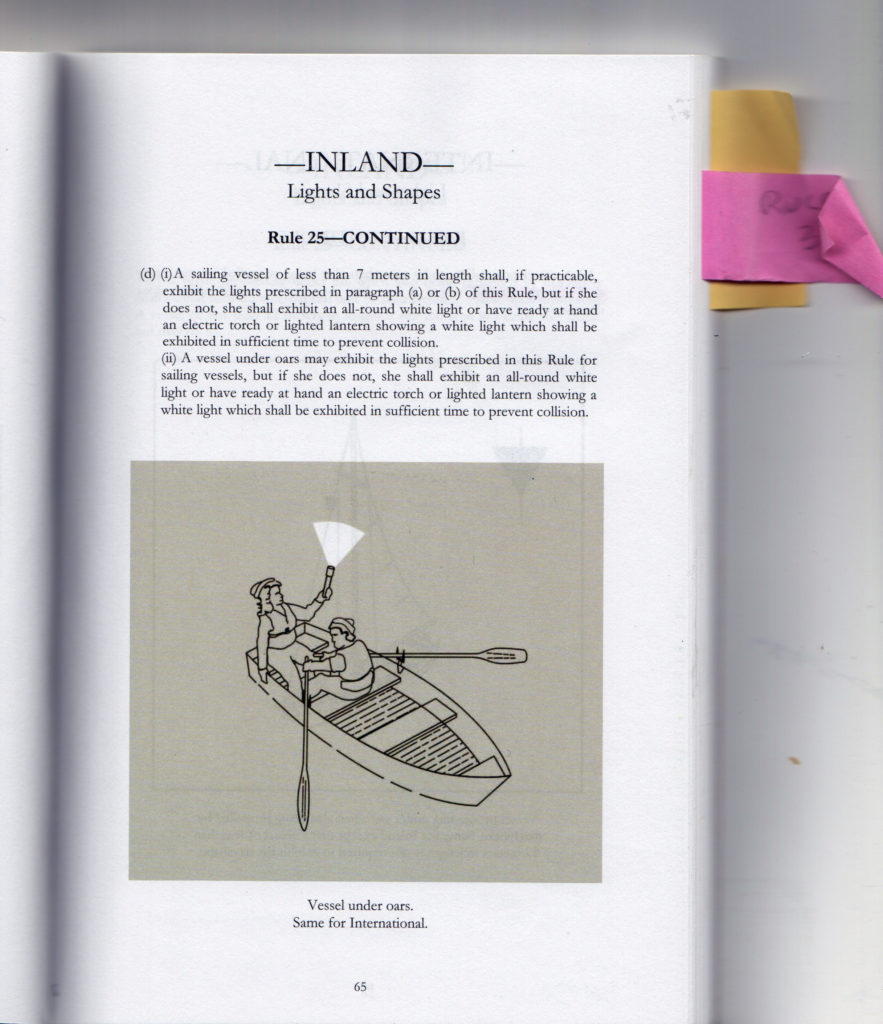
Work on Caro Babbo has been put on hold. The new electrical panel is almost finished, but everything else will wait until after the course completes. June will be a road trip rather than a sailing trip as we will head to Colorado to meet Hilary’s sisters and nieces to celebrate her life… then a brief trip to Phoenix, all by car. We’ll shake down Caro Babbo’s new electronics at the end of June and into July.
Thank you, everyone who sent their condolences.
It is still chilly here in Port Townsend. The high was a little less the 50ºF, and the wind in the Strait of Juan de Fuca was blowing. The grass is green and growing quickly; the deer are vacuuming up the dandelion flowers.

Caro Babbo is my home most nights during the week. I am learning the rhythm of the city and seeing the same people walking home from their jobs in the same place in my walk down from Lee’s Landing to the Center for Wooden Boats.
If I row, I row alone on Lake Union through the water in the daylight going to CWB. Returning it is dark on the lake and I am the only vessel underway*.
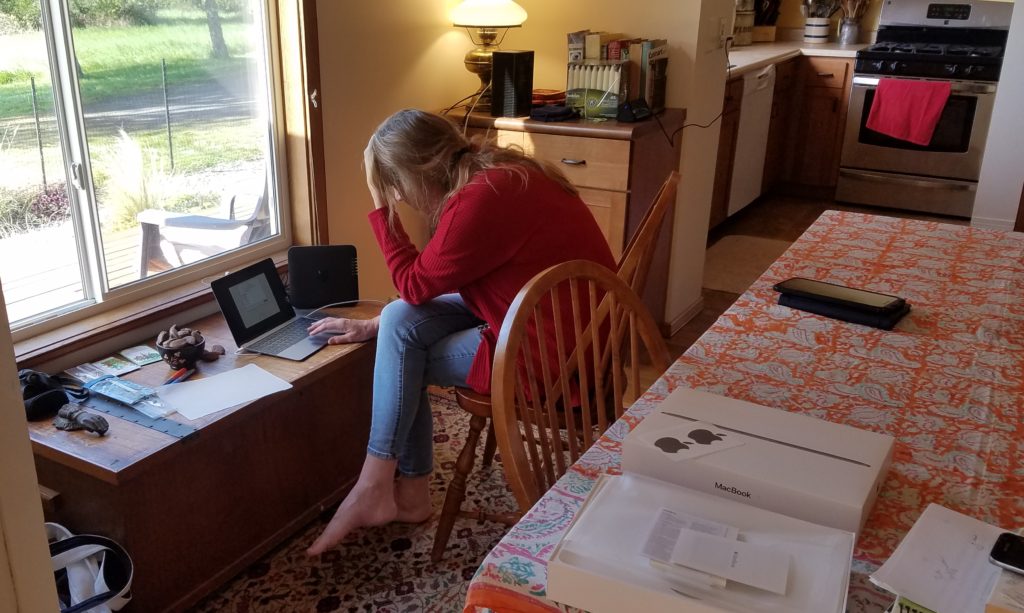
We are getting a feel for how far we are drifting from the mainstream culture. Jennifer’s son Owen, in a sign that he is now an adult, bought Jennifer a MacBook for her birthday. In setting it up, Owen was dumbfounded that we want data and music to reside on the Mac not in the cloud and that we want the software we run to be the same. He can, sort of, get his head around the idea that we don’t generally have internet, or not usable internet when we’re traveling.

Finally, a pair of great blue herons are nesting in a Douglas fir in front of the Port Townsend House. They look like two old men hunched together.
† Now, it is standard procedure for each line of code written to be reviewed by the development team. I wonder how I would do, but then I left the corporate world and struck out on my own when I was 27 years old.
*Underway is a vessel not at anchor, not made fast to shore, or nor aground. It doesn’t have to be moving through the water. If it is moving though the water (has steerage or is throwing a wake), it is making way. Lights, sound signals and liabilities potentially differ between the two.

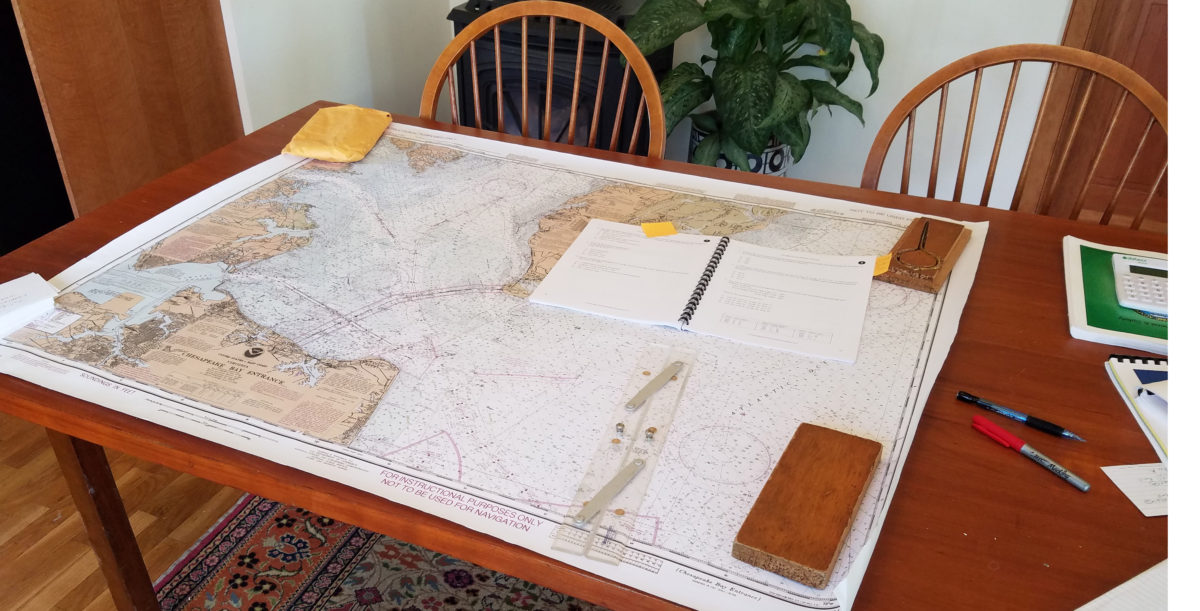
John, you and Jennifer are absolutely amazing. Thank you for this!!!
We’re hardly amazing, John. But thank you for the comment. We try. If I can pass the exams, I will be quite pleased.
Where do you spend your time these days?